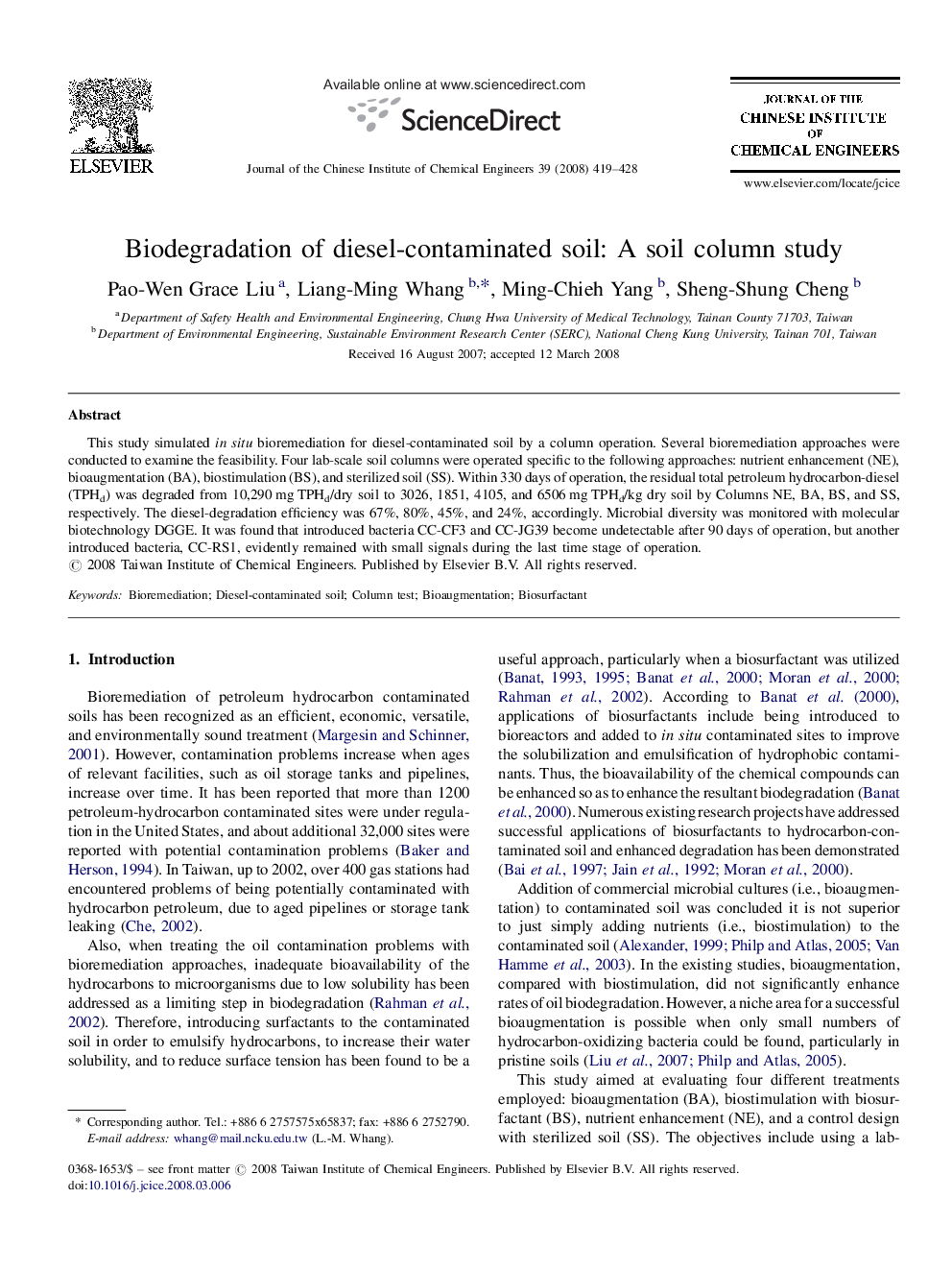| Article ID | Journal | Published Year | Pages | File Type |
|---|---|---|---|---|
| 217671 | Journal of the Chinese Institute of Chemical Engineers | 2008 | 10 Pages |
This study simulated in situ bioremediation for diesel-contaminated soil by a column operation. Several bioremediation approaches were conducted to examine the feasibility. Four lab-scale soil columns were operated specific to the following approaches: nutrient enhancement (NE), bioaugmentation (BA), biostimulation (BS), and sterilized soil (SS). Within 330 days of operation, the residual total petroleum hydrocarbon-diesel (TPHd) was degraded from 10,290 mg TPHd/dry soil to 3026, 1851, 4105, and 6506 mg TPHd/kg dry soil by Columns NE, BA, BS, and SS, respectively. The diesel-degradation efficiency was 67%, 80%, 45%, and 24%, accordingly. Microbial diversity was monitored with molecular biotechnology DGGE. It was found that introduced bacteria CC-CF3 and CC-JG39 become undetectable after 90 days of operation, but another introduced bacteria, CC-RS1, evidently remained with small signals during the last time stage of operation.
